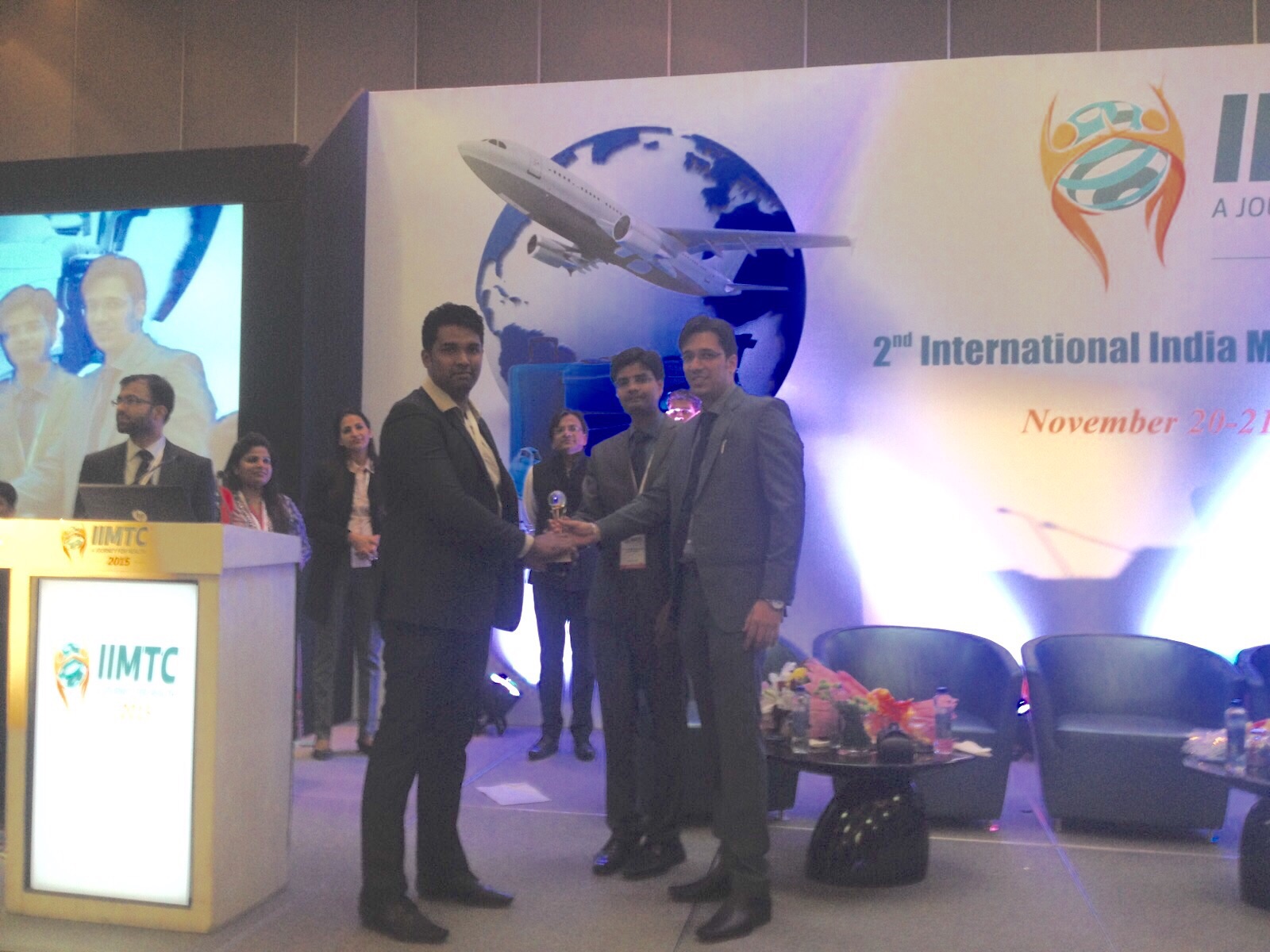What is a Laryngectomy ?
The surgical procedure is performed to remove the voice box (larynx) and the separation of the airway from the esophagus, nose and the mouth. A part or all of the larynx can be removed. Owing to its location, larynx (voice box) plays a crucial role in swallowing, speaking and breathing. The larynx is located in the front of the esophagus (food pipe) and above on the trachea (windpipe). Larynx consists of two small bands of muscle (vocal cords) that helps in preventing the food from entering into the lungs and it vibrates to generate the voice. Laryngectomy is performed to remove the cancerous or tumor tissues.
Throat Cancer Symptoms
Location and size of the tumors are the two important factors for determining the symptoms-
While coughing the blood comes out
Constant cough
A mass or lump either in the throat or in the neck
Persistent or constant sore throat
Difficulty in breathing
The pain from the throat can result in ear pain
Laryngectomy Procedure
The surgical procedure is performed under general or local anesthesia. The surgeon in total laryngectomy will make cuts in the neck in order to open up the area. The crucial parts of the surgery
The first step is the removal of lymph nodes
The surgeon then removes the tissues and the larynx around it.
An opening is made in the patient’s trachea along with a hole in front of the neck.
The patient’s trachea is brought up and is then attached to stoma (hole)
After the surgical procedure, the patient will breathe from the stoma and the stoma is never removed.
Clips or stitches are used to thoroughly close the skin and the muscles.
Tracheoesophageal puncture (TEP) is a little hole in the trachea (windpipe) and the tube which is responsible for sending food from the throat into the stomach (esophagus).
Prosthesis (a little man-made part) will be placed into the opening. With the help of Prosthesis, the patient is able to speak after the removal of the voice box.
Minimally Invasive Surgery for Laryngectomy
The less invasive surgeries works for specific people and largely depends upon the type of the cancer and also on how much the cancer has spread. Some of the procedures are vertical partial laryngectomy, supracricoid partial laryngectomy, supraglotticor horizontal partial laryngectomy and endoscopic surgery.
Partial Laryngectomy
The procedure of removing a part of larynx instead of the whole is a very rare case. In this, a part of the voice box is left in order to be able to speak. But this results in the hoarse and weak voice. A temporary tracheotomy may be present that enables one to breathe.
Treatments for Laryngeal Cancer
What is a Laryngectomy ?
The surgical procedure is performed to remove the voice box (larynx) and the separation of the airway from the esophagus, nose and the mouth. A part or all of the larynx can be removed. Owing to its location, larynx (voice box) plays a crucial role in swallowing, speaking and breathing. The larynx is located in the front of the esophagus (food pipe) and above on the trachea (windpipe). Larynx consists of two small bands of muscle (vocal cords) that helps in preventing the food from entering into the lungs and it vibrates to generate the voice. Laryngectomy is performed to remove the cancerous or tumor tissues.
Throat Cancer Symptoms
Location and size of the tumors are the two important factors for determining the symptoms-
While coughing the blood comes out
Constant cough
A mass or lump either in the throat or in the neck
Persistent or constant sore throat
Difficulty in breathing
The pain from the throat can result in ear pain
Laryngectomy Procedure
The surgical procedure is performed under general or local anesthesia. The surgeon in total laryngectomy will make cuts in the neck in order to open up the area. The crucial parts of the surgery
The first step is the removal of lymph nodes
The surgeon then removes the tissues and the larynx around it.
An opening is made in the patient’s trachea along with a hole in front of the neck.
The patient’s trachea is brought up and is then attached to stoma (hole)
After the surgical procedure, the patient will breathe from the stoma and the stoma is never removed.
Clips or stitches are used to thoroughly close the skin and the muscles.
Tracheoesophageal puncture (TEP) is a little hole in the trachea (windpipe) and the tube which is responsible for sending food from the throat into the stomach (esophagus).
Prosthesis (a little man-made part) will be placed into the opening. With the help of Prosthesis, the patient is able to speak after the removal of the voice box.
Minimally Invasive Surgery for Laryngectomy
The less invasive surgeries works for specific people and largely depends upon the type of the cancer and also on how much the cancer has spread. Some of the procedures are vertical partial laryngectomy, supracricoid partial laryngectomy, supraglotticor horizontal partial laryngectomy and endoscopic surgery.
Partial Laryngectomy
The procedure of removing a part of larynx instead of the whole is a very rare case. In this, a part of the voice box is left in order to be able to speak. But this results in the hoarse and weak voice. A temporary tracheotomy may be present that enables one to breathe.
Treatments for Laryngeal Cancer
Radiotherapy : It is the most common treatment and is used for treating early stage cancers. The therapy helps in shrinking a large tumor of the larynx that makes it easy to remove.
Chemotherapy : Both radiotherapy and chemotherapy can be performed simultaneously to treat the cancer. Chemotherapy is also used when the cancer of the larynx again occurred after radiotherapy. The advanced cancer can be treated before with the help of chemotherapy (induction therapy).
Biological Therapy : This type of treatment is made up of natural body substances. The patient may opt for biological therapy which is also called as cetuximab. In this, radiotherapy can also perform for locally advanced squamous cell laryngeal cancer.
What is Throat Cancer ?
The throat (pharynx) is a cancer that develops in the throat. The throat is a five inch long tube that connects from the nose to the neck. The two major places of the throat cancer forms are pharynx and larynx. Head and neck cancer is the type of throat cancer that includes the salivary glands, nose, neck lymph nodes, mouth, tonsils and sinuses. Throat cancer is of two types –
Adenocarcinoma : This type of cancer starts in the glandular cells of the throat.
Squamous Cell Carcinoma : This type of cancer occurs in the flat and thin cells which lines the throat.
Pharyngeal cancer and Laryngeal cancer are the two most common forms of throat cancer.
Throat Polyps
The condition where there is an abnormal growth of the tissue which grows in the throat is known as throat polyps. Throat polyps may become cancerous and that is why a biopsy is performed. The symptoms include a feeling of having something at the back of the throat or can also be a feeling of sensation while swallowing.
Head and Neck Cancer
The cancers of head and neck usually starts in the squamous cells which lines the moist and mucosal surfaces in the head and neck. They are referred to as Squamous cell carcinomas of the head and neck. The cancers can also start in the salivary glands and that is a very uncommon situation. Salivary glands consist of a large number of cells which can become cancerous and ultimately leads to many types of salivary gland cancer.
To know more about Laryngectomyy cost in India keep browsing our site Medical India Tourism and to book a medical tour to India please fill the given form.
Radiotherapy : It is the most common treatment and is used for treating early stage cancers. The therapy helps in shrinking a large tumor of the larynx that makes it easy to remove.
Chemotherapy : Both radiotherapy and chemotherapy can be performed simultaneously to treat the cancer. Chemotherapy is also used when the cancer of the larynx again occurred after radiotherapy. The advanced cancer can be treated before with the help of chemotherapy (induction therapy).
Biological Therapy : This type of treatment is made up of natural body substances. The patient may opt for biological therapy which is also called as cetuximab. In this, radiotherapy can also perform for locally advanced squamous cell laryngeal cancer.
What is Throat Cancer ?
The throat (pharynx) is a cancer that develops in the throat. The throat is a five inch long tube that connects from the nose to the neck. The two major places of the throat cancer forms are pharynx and larynx. Head and neck cancer is the type of throat cancer that includes the salivary glands, nose, neck lymph nodes, mouth, tonsils and sinuses. Throat cancer is of two types –
Adenocarcinoma : This type of cancer starts in the glandular cells of the throat.
Squamous Cell Carcinoma : This type of cancer occurs in the flat and thin cells which lines the throat.
Pharyngeal cancer and Laryngeal cancer are the two most common forms of throat cancer.
Throat Polyps
The condition where there is an abnormal growth of the tissue which grows in the throat is known as throat polyps. Throat polyps may become cancerous and that is why a biopsy is performed. The symptoms include a feeling of having something at the back of the throat or can also be a feeling of sensation while swallowing.
Head and Neck Cancer
The cancers of head and neck usually starts in the squamous cells which lines the moist and mucosal surfaces in the head and neck. They are referred to as Squamous cell carcinomas of the head and neck. The cancers can also start in the salivary glands and that is a very uncommon situation. Salivary glands consist of a large number of cells which can become cancerous and ultimately leads to many types of salivary gland cancer













